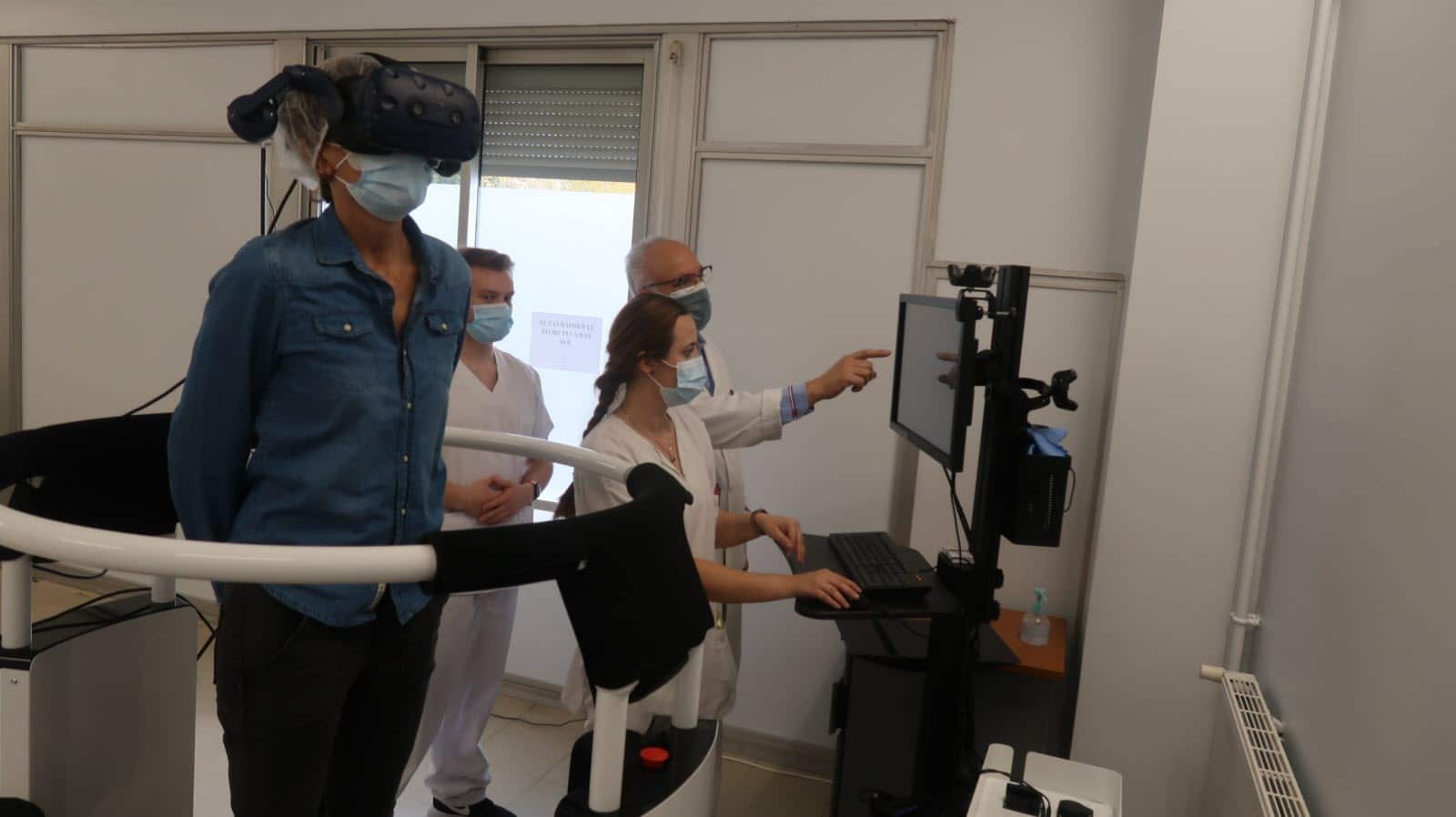A hospital in Montélimar uses virtual reality to rehabilitate patients - Le Dauphiné.com - 07/11/2021
Virtual reality is a technological solution increasingly used by hospitals. In Montélimar, a helmet linked to a dynamic platform is now used to rehabilitate patients, particularly stroke victims.

The patient equipped with the virtual reality headset visualises herself on a platform in front of a colourful landscape.
The physiotherapist varies the inclinations of the rehabilitation platform from front to back and laterally to work on balance.
to the side to improve her balance.
If there weren't several white coats around, you'd almost forget you were in a hospital. For a month now, a room in the GHPP has looked like a video game room: a dynamic posturography platform is now operational, connected to a computer screen and a virtual reality headset. A headset that can also be used with the driving simulator installed next door.
These new tools should help in the management of post-stroke patients, but also patients suffering from balance problems linked to ENT problems or suffering from neurological disorders. " This was developed by a physiotherapist from Montpellier who wanted to go beyond vestibular physiotherapy (editor's note: treating vertigo)," explains Alis Sandu, a physiotherapist at the GHPP (which also offers outpatient consultations).
The platform, thanks to sensors, offers controlled and quantifiable 360-degree movements, associated with different immersive virtual reality programmes. " This first gives us information on the position and posture of patients, to make an accurate assessment and then it allows us to propose rehabilitation exercises always on the platform," continues the physiotherapist. It is possible to set the speed, the time to hold a position... and to vary the difficulty with an inclination of up to 12 degrees. "And the platform can support up to 200 kg. The patient is in a safe environment," says Alis Sandu. " We can offer 30-minute sessions depending on the pathology and the patient's fatigue level, of course.
"We are rather surprised by the fact that the elderly easily adhere to these new virtual reality tools", rejoices Dr Guillaume Dorey, in charge of the sports medicine department. A rather playful side that can also help to better accept rehabilitation. And because it is not always possible for a physiotherapist to place a patient in real conditions, Alis Sandu believes that this platform offers vast perspectives. "It allows us to better adapt to the reality, for example, of patients who suffer from visual scrolling disorders. It is difficult to take them up an escalator. And Dr Heroum, head of the neurology department, continues: "It can also be used for mirror therapy (editor's note: this aims to stimulate damaged brain areas to compensate for deficient areas) in order to stimulate brain plasticity.
In particular, in the context of the treatment of stroke victims suffering from hemiplegia. A tool that comes in addition to the classic global care provided by practitioners, occupational therapists and physiotherapists. " After a stroke, 25% of patients retain significant and disabling neurological after-effects," says Dr Heroum. Re-education is therefore very important, as he keeps reminding us.
A global investment of some 60,000 euros.
Article Le Dauphiné.com - 10/11/21

